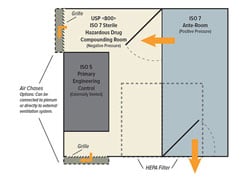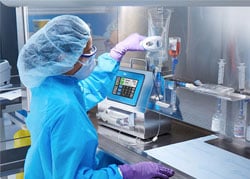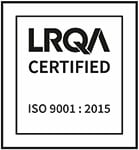USP <800> Compounding Cleanrooms
Facilities and operations staff at hazardous compounding facilities often call us with a bundle of questions, sometimes in a feverish hurry to understand what upgrades their facility requires for USP 800 compliance. Storage conditions, ventilation, anterooms, isolator upgrades: unpacking USP 800 is complex. But, it doesn't need to be overwhelming.
Why USP 800? Why Now?
Occupational exposures to hazardous drugs have many effects, including cytogenetic effects, reproductive effects, leukemia and other cancers, and chronic ailments. Lackluster controls, supervision, and training previously left HCWs unaware of risks and unprotected from HDs, especially in smaller, less equipped hospitals. USP 800 closes standards, training, and transparency gaps that expose nearly 8 million nurses, pharmacists, physicians and other health care workers to hazardous drugs (HDs).
Studies cited by OSHA report an overwhelming number of surveys between 2012 and 2015 which report:
- 9-13% of nurses and pharmacists reported never having received HD training
- HD preparers reported failing to wear protective gowns 20-36% of the time
- HD preparers reported failing to wear chemotherapy gloves 8-10% of the time
- 4-17% of employees had experienced skin or mucous membrane contact with HDs during the previous year
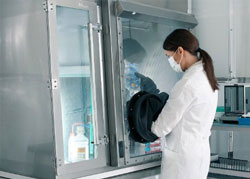 USP 800 Cleanroom Standards Overview
USP 800 Cleanroom Standards Overview
USP 800 is a cleanroom standard issued in March of 2014 by the United States Pharmacopeial Convention (USP). The deadline for compliance may change, at the time of this articles publication the deadline is scheduled for December 2019. The date and scope of adoption may differ on a state-by-state basis, thus consulting with a compliance specialist is encouraged.
Chapter 800 expands the safety of healthcare workers, patients, and the environment for processing hazardous drugs. It reflects a number of stages in the delivery of sterile and non-sterile compounds. Learn more.
Implementing USP 800 is a key protection for healthcare workers and the immediate environment. Organizations processing hazardous and nonhazardous drugs, both sterile and nonsterile, face the most adverse impact. Some may struggle with renovation downtime, budget allocation, outlining key compliance changes, optimal equipment use, or identifying a project lead.
Notably, facility or engineering changes may require 12 to 18 months to complete for traditional "stick built" cleanrooms. Many facilities have already taken necessary actions for procedural and facility upgrades, or are well on their way.
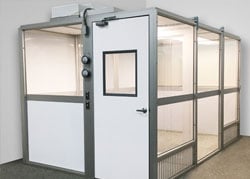 Upgrading a USP 797 Cleanroom to USP 800?
Upgrading a USP 797 Cleanroom to USP 800?
USP 797 requirements for the compounding of hazardous drugs were similar to non-hazardous compounds. USP 800 clarifies and expands upon the hazardous drug guidelines found in USP 797.
New USP guidelines may present challenges for compounding facilities. Some facilities need infrastructural and mechanical modifications for compliance. System evaluation includes duct systems, HEPA fan filters, differential pressure standards, air monitoring, and external air exhaust equipment. Learn more.
Is Your Facility Ready?
If you find yourself overwhelmed in a jungle of acronyms, terminology, and technical cleanroom specs, there might be a better way. CleanPro® helps you achieve the correct pressurization differentials, ACPH and ISO classification requirements (i.e., cleanroom construction, retrofitting, HVAC, HEPA filters, temperature/humidity gauges) for each space. Our engineering team conducts preliminary research to determine what types of facility changes you will need to upgrade from USP 795 or USP 797 compliance.

